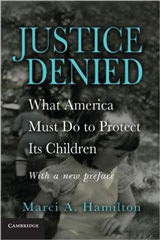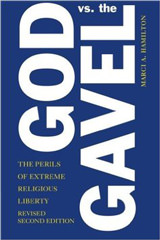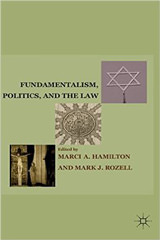The intense media coverage of the trial of George Zimmerman for the death of Trayvon Martin brought to the forefront the Community Relations Service (“CRS”) in the Department of Justice (“DOJ”). Many among the general public were unaware of this division within the DOJ, but its apparent role in the racial issues swirling around the case has now brought it to the public’s attention. Its role is unclear, as are the facts and what the jury verdict really means.
The Trail of Events Leading to the Not-Guilty Verdict for Zimmerman Is Not Crystal Clear
Much of the country is opining about this case and verdict as though they have personal knowledge. I’m going to start here with a recitation of the facts we know, to point out how much we really don’t.
On February 26, 2012, George Zimmerman shot Trayvon Martin. After Zimmerman said that he had acted in self-defense, he was not initially charged. But that, of course, was not the end.
First, Martin’s grieving parents created a Change.org petition seeking Zimmerman’s arrest. Second, they hired an attorney and filed a suit to obtain public records related to the event. Third, Zimmerman’s father sent a letter to the Orlando Sentinel in which he said that people “should be outraged by the treatment of George Zimmerman in the media” and mentioned that Zimmerman is not white, but rather Hispanic. At that point, we had a young man dead and two families suffering in public. It was a tragedy, but it was not yet relevant beyond Sanford, Florida.
Then the story became national news. The New Black Liberation militia sent members to Florida to attempt a citizen’s arrest of Zimmerman, and the 911 calls from the night of the altercation were released to the media (which included the famous cries heard in the background, which both families claimed as their own son’s).
On March 19, the Department of Justice told the media that it would be investigating the shooting; the Sanford police chief temporarily resigned after he received a “no confidence” vote from the City Council; President Obama commented on the case; the Florida Governor got involved; and the FBI announced it was investigating. This was classic piling-on, if there ever was such a phenomenon.
Only after all of these developments did Special Prosecutor Angela Corey announce that Zimmerman was being charged with second-degree murder.
In late March and early April, demonstrations were held, with placards and public statements alleging that the shooting of Martin was race-based. Zimmerman’s family staunchly defended him against such charges, saying it was simply not who he was.
During the trial, the two sides took starkly different perspectives. For the prosecution, this was a race-fueled, unjustified shooting, where Zimmerman was the aggressor. For the defense, it was a case of self-defense, where Martin was the aggressor.
The Jury Verdict and Deliberations Are Opaque
The jury reached a verdict of “Not guilty.” Such an acquittal means they had reasonable doubt. Let’s be honest, here. There was widespread agreement at the end of the trial that the prosecution could not possibly win on a second-degree murder conviction. There was simply too much conflict in the testimony.
The prosecution’s chances improved when the judge agreed to a manslaughter charge as well as a second-degree murder charge, but, still, the courtroom battle over whose voice was on the 911 tape and who was the aggressor was pitched, and when facts are disputed like they were in this trial, it is rarely good news for the prosecution.
At least one juror—Juror B37, who was interviewed after the trial—has said that race took no part in their deliberations, and that the members of the jury viewed the case as one about a shooting, not a race-based shooting. Four members of the jury released a statement, distancing themselves from the statements of Juror B37, but also asking for privacy. We will likely never know what actually happened in the jury room.
I lay out this train of events, the resulting verdict, and the opacity over the jury’s actual reasoning for the purpose of pointing out how murky the issues really are in this case. We have many Monday morning quarterbacks speaking with absolute certainty on either side, but they weren’t at the initial altercation or, for the most part, anywhere near the courtroom. Certainty is not the equivalent of knowledge.
The Community Relations Service’s Role Is Also Unclear
The CRS was in the thick of the developing events, as it sent what it calls “mediators” to Florida in late March and early April. This little-known department within the DOJ had operated with under the radar in the case until the conservative watchdog group Judicial Watch submitted a Freedom Of Information Act (FOIA) request regarding its role in the Zimmerman allegations and case.
The federal government describes the CRS’s history and mission as follows:
“The Community Relations Service is the Department’s ‘peacemaker’ for community conflicts and tensions arising from differences of race, color, and national origin. Created by the Civil Rights Act of 1964, CRS is the only Federal agency dedicated to assist State and local units of government, private and public organizations, and community groups with preventing and resolving racial and ethnic tensions, incidents, and civil disorders, and in restoring racial stability and harmony.
It also assists communities in developing local mechanisms, conducting training, and other proactive measures to prevent racial/ethnic tension and violent hate crimes committed on the basis of actual or perceived race, color, national origin, gender, gender identity, sexual orientation, religion, or disability. CRS does not take sides among disputing parties and, in promoting the principles and ideals of non-discrimination, applies skills that allow parties to come to their own agreement. In performing this mission, CRS deploys highly skilled professional conciliators, who are able to assist people of diverse backgrounds.”
The key phrases I would take from this description are those stating that the CRS is charged with being a “peacemaker,” not an agitator, and that it “does not take sides among disputing parties.” Presumably, that would mean that it would be dealing with both sides equally. As discussed above, both the Martin and Zimmerman families reached out to the public to express their consternation, but the federal government seems to have dealt mostly and even exclusively with Martin’s side. Indeed, the involvement of the CRS, given its mission, seems to signal that the federal government has decided the incident was race-based, as opposed to a case of self-defense. In this particular case, that is taking sides.
News coverage has run the gamut on CRS’s role. According to Fox News, CRS was “organizing” protests that increased racial tensions. That would plainly violate CRS’s mission statement.
The Orlando Sentinel, in contrast, highlighted the “peacemaker” role of the CRS, but put the term in quotation marks.
My guess is that the truth lies somewhere in between. There can be little question that the federal government’s entrance into the fray gave those on Martin’s side a renewed incentive to protest the initial failure to charge Zimmerman, and to treat the case as one about race, rather than self-defense. The DOJ validated their assumptions and intuitions at the time. Or, perhaps this is a chicken-and-egg event, and we will never know where the actual cause and effect lie.
There does seem to be a lot more contact by CRS with the protesters and prosecutors than there was with those on the other side, e.g., the Zimmerman family. It appears that CRS was involved in putting together a meeting between the local NAACP and local officials, which led to the temporary resignation of the Police Chief, who had originally declined to prosecute Zimmerman. Is that the role of a “peacemaker” or the role of one that is taking a “side”?
True, there were few destructive acts committed by those on either side of the verdict in Sanford, and that is an achievement worthy of praise, whoever was responsible. I assume it was a coalition of individuals and organizations. Perhaps CRS led the way to such peacefulness, or perhaps it contributed to the likelihood of unrest.
There was little unrest on the ground in Florida following the verdict, but Los Angeles has erupted. The federal government covers both geographical areas, but I have to wonder if the difference in the result is more attributable to local and state law enforcement efforts, rather than to any federal involvement. It would be nice to know.
As with the rest of this case, including the facts and the jury’s deliberations, the CRS’s involvement is shrouded under a gray cloud. I, for one, would sorely like to know the truth on all three fronts. The first two answers may be impossible to learn, but the federal government is, of course, fully aware of its own role. If it is not the Big Brother figure that the recent NSA revelations have made it be, perhaps it can enlighten us on its actual role in these events.









